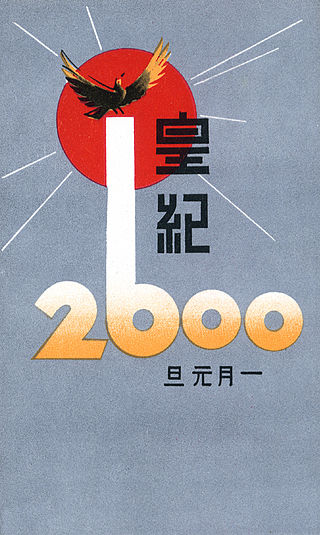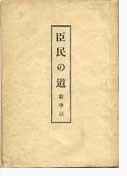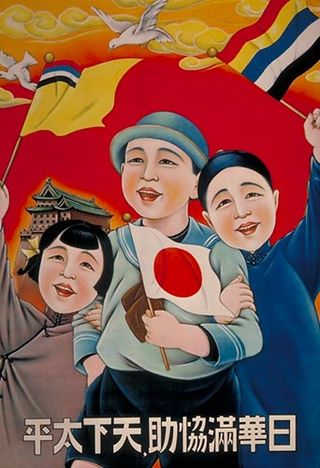
World War II was the deadliest military conflict in history. An estimated total of 70–85 million people perished, or about 3% of the estimated global population of 2.3 billion in 1940. Deaths directly caused by the war are estimated at 50–56 million, with an additional estimated 19–28 million deaths from war-related disease and famine. Civilian deaths totaled 50–55 million. Military deaths from all causes totaled 21–25 million, including deaths in captivity of about 5 million prisoners of war. More than half of the total number of casualties are accounted for by the dead of the Republic of China and of the Soviet Union. The following tables give a detailed country-by-country count of human losses. Statistics on the number of military wounded are included whenever available.

The Greater East Asia Co-Prosperity Sphere, also known as the GEACPS, was a pan-Asian union that the Japanese Empire tried to establish. Initially, it covered Japan, Manchukuo, and China, but as the Pacific War progressed, it also included territories in Southeast Asia. The term was first coined by Minister for Foreign Affairs Hachirō Arita on June 29, 1940.
In Japan, honne refers to a person's true feelings and desires, and tatemae refers contrastingly to the behavior and opinions one displays in public. This distinction began to be made in the post-war era.
The Tanaka Memorial is an alleged Japanese strategic planning document from 1927 in which Prime Minister Baron Tanaka Giichi laid out a strategy to take over the world for Emperor Hirohito. The authenticity of the document was long accepted and it is still quoted in some Chinese textbooks, but historian John Dower states that "most scholars now agree that it was a masterful anti-Japanese hoax."

The Fighting Seabees is a 1944 American war film directed by Edward Ludwig and starring John Wayne and Susan Hayward. The supporting cast includes Dennis O'Keefe, William Frawley, Leonid Kinsky, Addison Richards and Grant Withers. The Fighting Seabees portrays a heavily fictionalized account of the dilemma that led to the creation of the U.S. Navy's "Seabees" in World War II. At the 17th Academy Awards, the film received a nomination for Best Scoring of a Dramatic or Comedy Picture for Walter Scharf and Roy Webb but the award went to Max Steiner for Since You Went Away.
John W. Dower is an American author and historian. His 1999 book Embracing Defeat: Japan in the Wake of World War II won the U.S. National Book Award for Nonfiction, the Pulitzer Prize for General Nonfiction, the Bancroft Prize, the Los Angeles Times Book Prize, the Mark Lynton History Prize, and the John K. Fairbank Prize of the American Historical Association.

The General Affairs State Council (国務院) was the official executive administrative branch of the government of the Japanese-controlled Empire of Great Manchuria from 1934–1945.

Shōwa Statism is the nationalist ideology associated with the Empire of Japan, particularly during the Shōwa era. It is sometimes also referred to as Emperor-system fascism, Japanese-style fascism or Shōwa nationalism.
Rōmusha (労務者) a.k.a “Japanese Corvée”, is a Japanese language word for "laborer". In English, it usually refers to non-Japanese who were forced to work for the Japanese military during World War II. The U.S. Library of Congress estimates that in Java, between 4 and 10 million rōmusha were forced to work by the Japanese military during the Japanese occupation of the Dutch East Indies during World War II, many of whom experienced harsh conditions and either died or were stranded far from home. However, the term was not defined precisely by either the Japanese or the Allies and estimates for the total numbers of rōmusha sometimes encompass both the unpaid laborers a.k.a kinrōhōshi, as well as native auxiliary forces, such as troops of the Japanese-allied Indonesian volunteer army Pembela Tanah Air (PETA) and voluntary transmigrants to other islands in Indonesia.

The Instructions for the Battlefield was a pocket-sized military code issued to soldiers in the Imperial Japanese forces on 8 January 1941 in the name of then-War Minister Hideki Tojo. It was in use at the outbreak of the Pacific War.

Hakkō ichiu or hakkō iu was a Japanese political slogan meaning the divine right of the Empire of Japan to "unify the eight corners of the world." The slogan formed the basis of the empire's ideology. It was prominent from the Second Sino-Japanese War to World War II and was popularized in a speech by Prime Minister Fumimaro Konoe on January 8, 1940.

Bushido: The Soul of Japan is a book written by Inazō Nitobe exploring the way of the samurai. It was published in 1899.

The Shinmin no michi was an ideological manifesto issued by the Ministry of Education of Japan during World War II aimed at Japan's domestic audience to explain in clear terms what was expected of them "as a people, nation and race".

Japanese propaganda in the period just before and during World War II, was designed to assist the regime in governing during that time. Many of its elements were continuous with pre-war themes of Shōwa statism, including the principles of kokutai, hakkō ichiu, and bushido. New forms of propaganda were developed to persuade occupied countries of the benefits of the Greater Asia Co-Prosperity Sphere, to undermine American troops' morale, to counteract claims of Japanese atrocities, and to present the war to the Japanese people as victorious. It started with the Second Sino-Japanese War, which merged into World War II. It used a large variety of media to send its messages.
Know Your Enemy: Japan is an American World War II propaganda film about the war in the Pacific directed by Frank Capra, with additional direction by experimental documentary filmmaker Joris Ivens. The film, which was commissioned by the U.S. War Department, sought to educate American soldiers about Japan, its people, society and history, and its totalitarian militaristic government. However, the film never realized its full purpose because its completion was delayed by disputes between Hollywood and Washington, and the abrupt end of the Pacific War soon after the film's release in August 1945. The film's first public screening was in 1977 as part of a PBS special.

Hayashi Fusao was the pen name of a Japanese novelist and literary critic in Shōwa period Japan. He is known for his early works in the proletarian literature movement, although he later became a strong ultranationalist. His real name was Gotō Toshio (後藤寿夫), although he also used the alias "Shirai Akira".
An Investigation of Global Policy with the Yamato Race as Nucleus was a Japanese government report created by the Ministry of Health and Welfare's Institute of Population Problems, and completed on July 1, 1943.

The Concordia Association was a political party in Manchukuo. Established to promote the ideals of Pan-Asianism and the creation of a multi-ethnic nation-state and to create a structure which would gradually replace military rule over Manchukuo with civilian control, the party was unable to fulfill its promise, and was eventually subverted into an instrument of totalitarian state-control by the Japanese Kwantung Army.

The Greater East Asia Conference was an international summit held in Tokyo from 5 to 6 November 1943, in which the Empire of Japan hosted leading politicians of various component parts of the Greater East Asia Co-Prosperity Sphere. The event was also referred to as the Tokyo Conference.

Scrap the Japs is a 1942 American anti-Japanese cartoon with the popular character Popeye as protagonist. It follows his adventures after being sent for punishment on a ship and running into Japanese sailors.














